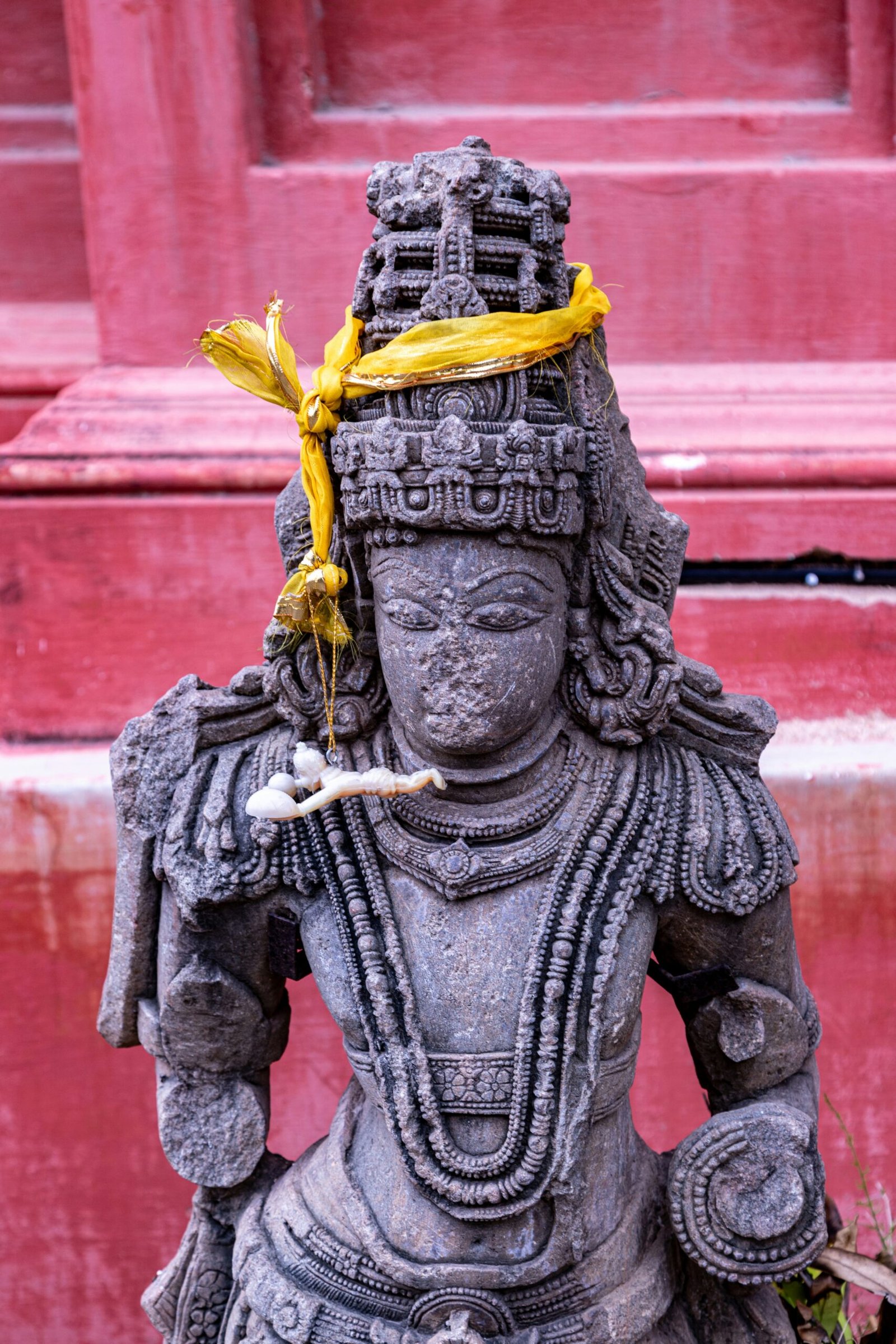
The Historical and Cultural Significance of the Telugu Language
The Telugu language is one of the oldest and most revered Dravidian languages in India, with a history that spans several millennia. Its origins can be traced back to early inscriptions dating from the 6th century BCE, making it not only a cornerstone of linguistic heritage in the region but also a vital cultural marker. Over the centuries, Telugu has undergone significant evolution, adapting to the socio-political changes and absorbing influences from Sanskrit and Prakrit, which have enriched its vocabulary and literary forms.
Classical Telugu literature, often considered the golden era of Telugu, flourished between the 11th and 15th centuries. This period saw the creation of epic works such as “Nannaya Bhattarakudu’s Mahabharatam,” a translation of the Mahabharata, and “Pothana’s Bhagavatham,” which are still celebrated for their poetic excellence and philosophical depth. These literary masterpieces played a crucial role in shaping the cultural identity and moral values of the Telugu-speaking people of Telangana and Andhra Pradesh.
Notable literary figures such as Nannaya, Tikkana, and Yerrapragada, collectively known as the “Kavitrayam” or “Trinity of Poets,” significantly contributed to the richness of Telugu literature. Their works laid the foundation for future generations of poets and writers, influencing various art forms, including regional dance and music. The ancient scripts of Telugu, like Brahmi and Kharosthi, also bear witness to the language’s profound historical roots and its widespread usage in administrative and cultural contexts.
The influence of the Telugu language extends beyond literature. It has played a pivotal role in the evolution of regional art, music, and dance forms, such as Kuchipudi and Carnatic music, where the lyrical beauty of Telugu compositions is often highlighted. These art forms have not only preserved the linguistic heritage but also promoted it across different cultural platforms, thus ensuring the language’s continued relevance and prominence.
In conclusion, the Telugu language is more than just a means of communication; it is a repository of the rich cultural, historical, and artistic traditions of Telangana and Andhra Pradesh. Its enduring legacy continues to inspire and shape the cultural landscape of the region, making it an integral part of India’s diverse linguistic heritage.
Traditional Festivals Celebrated in Telangana and Andhra Pradesh
The Telugu-speaking regions of Telangana and Andhra Pradesh are renowned for their vibrant and diverse festivals, which are deeply rooted in the rich cultural heritage of the area. These festivals not only showcase traditional practices and rituals but also bring communities together in celebration.
Sankranti, one of the most significant festivals, marks the harvest season and is celebrated with great enthusiasm. The festival typically spans three days, each with its unique customs. On Bhogi, the first day, people discard old items and embrace new beginnings by lighting bonfires. The second day, Pedda Panduga, involves cooking traditional dishes like Pongal and offering prayers. The final day, Kanuma, is dedicated to honoring cattle, which play a crucial role in agriculture.
Ugadi, the Telugu New Year, signifies new beginnings and is celebrated with much fervor. The day starts with a ritualistic oil bath, followed by prayers and the preparation of Ugadi Pachadi, a special dish symbolizing the different flavors of life. This festival is believed to bring prosperity and happiness for the coming year.
Dussehra, also known as Vijayadashami, commemorates the victory of good over evil. In Andhra Pradesh, the festival is marked by the performance of traditional dramas and the worship of goddess Durga. Telangana, on the other hand, celebrates Bathukamma during this period. Bathukamma is a floral festival where women create beautiful flower arrangements and sing folk songs, reflecting the region’s agrarian culture.
Diwali, the festival of lights, is celebrated with immense joy. Homes are illuminated with oil lamps, and families come together to perform Lakshmi Puja, seeking the blessings of the goddess of wealth. The festival is also marked by the bursting of fireworks and the sharing of sweets and gifts, symbolizing the triumph of light over darkness.
Unique to Telangana are the Bonalu and Bathukamma festivals. Bonalu is celebrated with grand processions and offerings to the goddess Mahakali, seeking her protection and blessings. Bathukamma, as mentioned earlier, is a floral festival that celebrates the region’s natural beauty and agricultural abundance. Both festivals hold immense cultural significance and are integral to the local community’s identity.
These festivals are not just about rituals and celebrations; they represent the deep-rooted traditions and values of the Telugu-speaking people, fostering a sense of unity and belonging among them.
Heritage Sites and Monuments: A Glimpse into Telugu History
The Telugu-speaking regions of Telangana and Andhra Pradesh are home to a plethora of heritage sites and monuments that offer a vivid glimpse into their rich history and culture. Among these, the Charminar in Hyderabad stands as an iconic symbol of the region. Built in 1591 by Muhammad Quli Qutb Shah, this magnificent structure exemplifies Indo-Islamic architecture with its four grand arches and intricate stucco work. The Charminar also serves as a bustling hub of local life, surrounded by vibrant bazaars and mosques.
Another significant monument is the Golconda Fort, also located in Hyderabad. Originally a mud fort constructed in the 13th century, it was later transformed into a formidable fortress by the Qutb Shahi dynasty. The fort’s acoustic engineering, grand palaces, and the legendary Fateh Rahben gun reflect the advanced architectural prowess of the time. The fort’s history is intertwined with the region’s diamond trade, making it a site of both historical and economic significance.
In the neighboring state of Andhra Pradesh, the Lepakshi Temple stands as a testament to the Vijayanagara architectural style. Dating back to the 16th century, this temple is renowned for its exquisite frescoes, intricate carvings, and the iconic monolithic Nandi statue. The temple’s hanging pillar, which does not touch the ground, is a marvel of ancient engineering, drawing both devotees and tourists alike.
Not far from Lepakshi lies the Amaravati Stupa, one of the oldest Buddhist monuments in India. Constructed during the Mauryan period, this stupa is a significant relic of the region’s Buddhist heritage. The intricate carvings on the stupa depict various scenes from the life of Buddha, making it a crucial site for understanding the Buddhist influence in the Telugu-speaking regions.
These heritage sites and monuments not only showcase the architectural brilliance of their respective eras but also play a crucial role in preserving the cultural history of Telangana and Andhra Pradesh. Through their enduring presence, they offer invaluable insights into the rich tapestry of Telugu history, attracting scholars, historians, and tourists from around the world.
Traditional Arts, Crafts, and Cuisine of the Telugu People
The rich cultural tapestry of Telangana and Andhra Pradesh is vividly reflected in the traditional arts, crafts, and cuisine of the Telugu people. Among the most celebrated crafts is Pochampally ikat, a unique weaving style known for its intricate geometric patterns and vibrant colors. This traditional art form, originating from the town of Pochampally, has gained international acclaim and is a significant part of the region’s cultural identity.
Another notable craft is the making of Kondapalli toys. These charming wooden toys, hailing from the village of Kondapalli, are meticulously handcrafted and painted, often depicting rural life and mythological characters. Similarly, Nirmal paintings, originating from the town of Nirmal, showcase exquisite artistry with their use of natural dyes and intricate designs, often inspired by Mughal miniatures and local folklore.
The culinary heritage of the Telugu people is equally diverse and vibrant. The iconic Hyderabadi biryani, a flavorful blend of basmati rice, spices, and marinated meat, stands as a testament to the region’s rich history and cultural amalgamation. Andhra pickles, known for their tangy and spicy flavors, are a staple in many households and reflect the region’s penchant for bold and robust tastes.
Telangana’s spicy curries, such as the fiery Andhra chicken curry and the tangy tamarind-based pappu charu, are integral to the daily diet and are often paired with steamed rice or traditional breads. These dishes not only satisfy the palate but also serve as a means of bringing families and communities together, highlighting the importance of food in cultural and social practices.
In essence, the traditional arts, crafts, and cuisine of the Telugu people are more than mere expressions of creativity and culinary expertise. They are deeply woven into the cultural fabric of Telangana and Andhra Pradesh, preserving the region’s heritage and continuing to influence the day-to-day lives of its people. Through these art forms and culinary traditions, the rich legacy of the Telugu culture is celebrated and passed down through generations.
